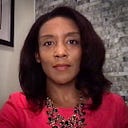Repairing Us, Doing Better: Baltimoreans coming back from environmental injustice and Coronavirus
In my previous post in this series, I took a deep dive into Newark, New Jersey and the COVID-19 and poverty related challenges face by African-American and Latina women.
This week we look at Baltimore, Maryland, “Charm City”, home of the Orioles and site of some of the worst environmental hazards, health outcomes and poverty in the country. It should come as no surprise that the city has also been hit hard by coronavirus. The past decade has been hard for the city. It’s been drawn into the national dialogue about policing after the Freddy Gray killing, riots and police officer trials. The city’s mayor was embroiled in a scandal that led to her ouster and the city in political turmoil until recently. Given all of these challenges, our research findings should come as no surprise.
African Americans in Baltimore earn $38,000 on average compared to $76,000 for their white counterparts. Of those African-American workers, 68-percent of their roles falls into one of four categories: transportation and warehousing, health services, administrative support and waste management, and retail trade.
Almost 20% of people aged 18 or over reports being in “poor” or “fair” health compared to 10% in neighboring Anne Arundel County. That is understandable given that more than half the population is exposed to hazards that the EPA Environmental Hazards Index rate at 20 or higher. The red areas display the areas of the city where the hazards, poverty and poor health converge.
When the pandemic hit, the 44-percent of inner city households without consistent Internet access felt it hardest. There was no “work from home” option, even if people happened to be in a job where that option would have been available. Students had no way to attend classes when schools closed and went online. As of this writing, Baltimore City has had 48,908 COVID-19 infections and 991 deaths (Johns Hopkins 2021). Of those dead, 525 were African-American. That number bears more meaning when said vis a vis the overall U.S. death count of 566,000. As I wrote last week, in order to have a valid conversation about recovery, we need to be honest about who has lost.
But what is mapped, data collected and documented starts in the past and comes into the present. The future of Baltimore is clearly in its citizens’ hands and may turn out to be an entirely different story. For those of us who specialize in disaster work, the meaning of social cohesion and social connectedness are incredibly important to community resilience. Both are critical to disaster recovery. Baltimoreans are nothing if not resilient. When the word about young people not being able to stay in school because of lack of connectedness, the community stepped in. Rowdy Orbi.t Founder Jonathan Moore, Elev8 Baltimore, New Song Charter School and other parts of the West Baltimore community held a drive to collected hundreds of computers for students. Some of the same people have been working for years to bring community WIFI to that part of the city. The result — more than 15 square miles (and counting) of free or low-cost Internet access to parts of the city that had been “blacked out”.
To address the environmental hazards and lack of green space, a source issue for urban heat and public health problems, a team from the Still Meadow Community Fellowship, along with student volunteers and researchers from the University of Delaware have been clearing and replanting urban forests. The goal is to restore the environment, but also give people a gathering place to decompress and reconnect with nature. While Baltimore has significant challenges, it is also a city of communities. All of them have capacity and agency that needs to be recognized as much as what they have lost needs to be recognized. This is the true path to building back, and doing better.
Thanks again to the community, my colleagues and our partners for sharing their work and their stories with us. You can take a closer look at the data on our annotated map at SocialExplorer.com. They are also available as lecture starters or “stories” to help educators discuss equity and community resilience (https://www.socialexplorer.com/1747033440/view). Next week, we use updated census and COVID-19 data, plus information from our economics assessment to look at formerly redlined communities along the Eastern Seaboard.
